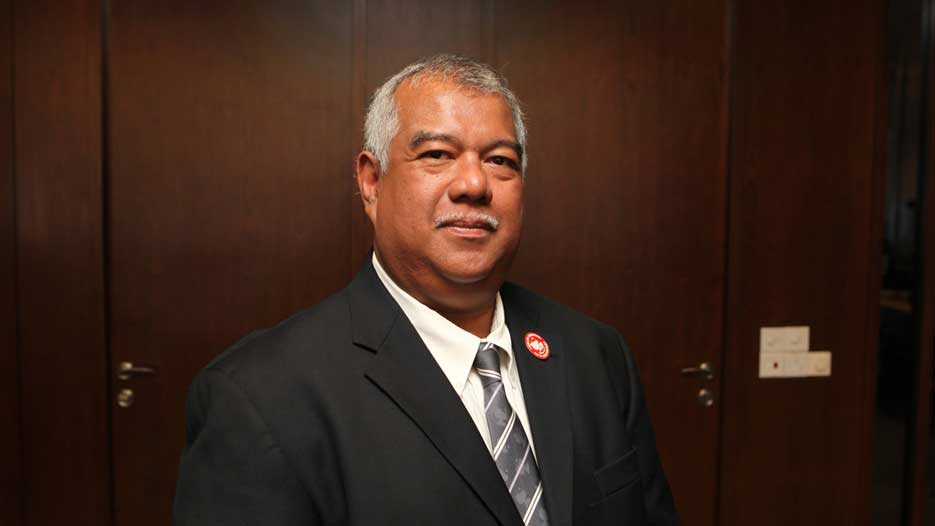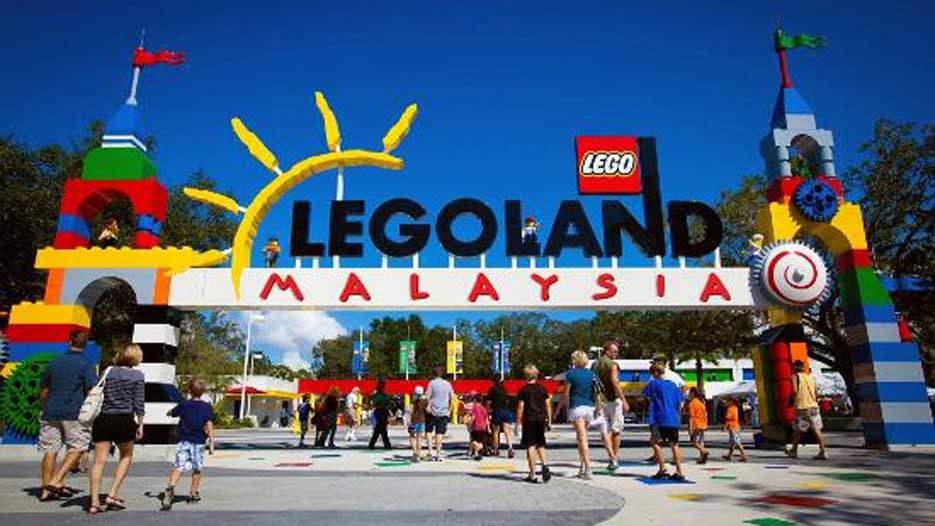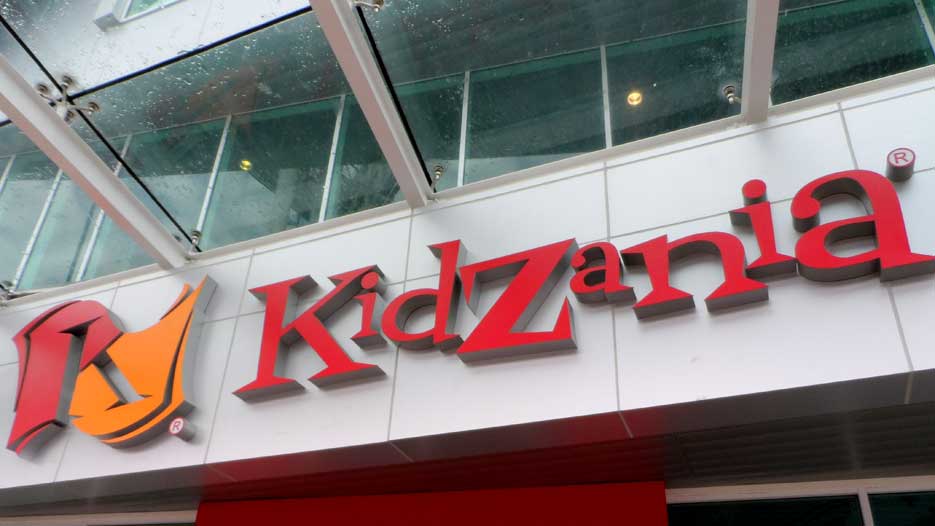Tourism Industry in Malaysia: Plan to Bring 36 Million Tourist is Realistic
This industry is thriving in Malaysia. This is mainly because the industry has the complete support of the Malaysian government. We have been organizing road shows around the world. We are also focusing on family-oriented tourism. That is why we have these family-friendly products, these sites, like KidZania, LegoLand, Puteri Harbour with Sanrio Hello Kitty Town and the Little Big Club with Thomas, Bob the Builder etc.
Interview with Tunku Dato Ahmad Burhanuddin, Group Managing Director of Themed Attractions

What is your overall assessment of the Tourism industry in Malaysia?
This industry is thriving in Malaysia. This is mainly because the industry has the complete support of the Malaysian government. We have been organizing road shows around the world. We are also focusing on family-oriented tourism. That is why we have these family-friendly products, these sites, like KidZania, LegoLand, Puteri Harbour with Sanrio Hello Kitty Town and the Little Big Club with Thomas, Bob the Builder etc.
Much of the focus has been on promoting family tourism. A lot of other theme parks in the country have also started doing this. We are hoping to boost our tourism with this focus. The knock-on effect has been quite good.
Tourism has been identified as one of the key areas in the Malaysia Tourism Transformation Plan. The target is 36 million tourists. How realistic is this goal? And how do the themed parks fit in with the overall tourism strategy?
I think the targets set by the Malaysian government are realistic in comparison to our neighbors’ tourism numbers. We are hoping to complement and supplement our neighbors’. Our focus is on drawing more people to Malaysia and getting them to send more time once they are here. We also hope they will add more money to our economy. For the targets to be met we need to have more products, more offerings, in place. We have a lot of natural and cultural assets. We need to make our product more appealing, we need to package it well. A lot of that work has been done across the country. We, at Themed Attractions and DRH, have also been doing that.
Just last week we opened our golf club in Datai, one of three golf clubs we are planning with Ernie Els. We had a fortieth Anniversary celebration for Hello Kitty over the weekend. That was a success. People came from all over for it. Some people travelled all the way from Australia to be there for that one day. I was really pleased with the success.
So it’s not just Malaysians visiting the parks, though they are our bread and butter, but we also have visitors from the region. We are targeting visitors from Australia, China, Taiwan, the Middle East and the Indian subcontinent. Some of it is logical because of our large ethnic Chinese and Indian populations.
However, we are a Muslim country and we have visitors from other Muslim countries. It makes travel in Malaysia easy for them, because our food follows the dietary laws. We are also using our linkage with the British Commonwealth, with our colonial history. Therefore, we try to attract the British, Australian, Canadian and South African tourists as well.
Therefore, we are doing many things to get more tourists into Malaysia. When we attract visitors from around the world, it becomes a yearlong destination, especially with family tourism. School children in different parts of the world have school holidays at different times. So it takes care of tourism during the ‘troughs’.
In your opinion, what are the major challenges facing Malaysian tourism?
Typically the major challenge is external competition. There are a lot of destinations around the world. So we have to make sure our product is world class. Manpower is another challenge. We have to find the right people to manage and run our parks. Staff training is very important. However, we are lucky that there are many Malaysians who have been working in this field around the world. We are trying to make it attractive for them to come back home to work.
But we also hire a lot of expatriates to help us. This helps Malaysians move up the learning curve very quickly. One of our advantages is that we speak English. We have a large number of English speakers in the industry. This makes tourists comfortable because communication is easy here.
“According to the Global Industry Analysts Incorporated market report, the amusement park and theme park market worldwide will generate revenues of USD 32 billion by 2017”. What is the outlook for the theme park industry in Malaysia?
The outlook is very bright. There has been a lot of interest, not just from investors, but also from consultants, suppliers etc. There have been announcements by other Malaysian companies about building theme parks. Some people refer to us ‘the Orlando of the Southeast’. It is important to have a significant number of parks for people to visit. People won’t travel here for one theme park. There must be a variety.
Then they will come back again. But they must also have the option of doing other things as well. While our focus up to now has been younger children, we are also looking at older children, teenagers and even adults. We need to examine other segments of tourism also.
We must also work in tandem with other neighboring countries, like companies in Singapore, Indonesia and Thailand to bring more people into this region. That cooperation has worked very well. However, we are way behind in comparison to the USA or Europe. There is a lot of potential for growth.

How competitive is the industry? Are they a lot of newcomers? How deep and sophisticated is the market compared to your neighbors?
Speaking of competition, I think our neighbors are doing about as well as us. The theme parks are not as sophisticated as they might be. It’s mainly thrill rides. But as we grow, we become more tech and social media savvy. We have to be more interactive, look into new ways of doing things, new ways of getting people into the parks. We are looking at who our customer is, the demographics of our hotels and attractions for the next five to ten years.
We have look at future trends. We need to see what people might want in the next 5, maybe 10 years, because that is how long it takes to build these parks. Technology is very important. When we participate in theme park industry trade shows, we look at what is happening, all the trends.
How do you approach the question of financing?
At the moment we are internally funded, we are a government sovereign fund. We have local bank financing. But over time, we will need to look at raising debt, raising capital, listing etc. At present we have a very strong shoulder to lean on, the Sovereign Wealth Fund, which gives us the support to kickoff. Eventually we will look at unlocking value.
It’s also very important to bring in partners. It’s a global business and having a global reach is very important. That’s the kind of partners we are looking for.
Are you fully satisfied with the attendance rates at your parks?
We are fully satisfied with the attendance at LegoLand and Kidzania. Puteri Harbour is very new. There are some challenges. You know what has happened in Malaysia over the past year. Still, we are happy with attendance rates in general. Legoland has surpassed its initial targets.
Kidzania is meeting them. We are not just looking at attendance numbers but also the per capita revenue we are getting. We are looking for ways to market and sell them as a bundle. We are moving to destination marketing. We have been working very closely with Tourism Malaysia to get this done. Much of our focus is on agents here and abroad.
This entity was originally set up by the government to develop the theme park industry in Malaysia. Now there are some private investors in the industry. Do you think this sector provides a good investment opportunity, for example, to international chains?
I think we must note that we are about more than just theme parks. We also have hotels, resorts, and golf courses. It’s an integrated, whole segment of the tourism industry. That makes us attractive, when you look at us in totality. There is a huge opportunity in Malaysia. A lot of people haven’t been to Malaysia yet. It’s still to be discovered by many more people. We are looking to tap that market as well.
How do you approach international branding? Which markets are you targeting?
From the start, all our attractions brands have been international, LegoLand, Kidzania, Hello Kitty and Little Big Club. In the hotel business, we have worked with Shangri-La and the Traders brand, which is changing to Jen soon. On our Desaru project, we are working with several international hotel brands. We also have our own brands. In restaurants, we have our own Lat’s Place. Datai is our own brand and a good hotel brand within Malaysia.
We promote and market it by using the various channels on the internet. We try to target specific markets rather than make a blast in general.

Can you talk a little about your current investment projects and future projects?
Our most important project right now is in Desaru. It is a short hop from Singapore. It’s an integrated resort town. There will be about five hotels. Some of them are already being built. There will be about 1000 total rooms available. There will be an attraction portion with a very large water park and an adventure park. It has 17 km of white sandy beaches. It is very close to Singapore. So Singapore will be an additional gateway to bring in the tourists.
It is a Greenfield project and we are building it from scratch. There is no legacy property to deal with, it is completely new. We are learning a lot, we are visiting a lot of resorts globally. We get to meet a lot of our potential customers in this way, that is the outbound tour agents. We can find out what they want, what they know will sell. Understanding the customer is very important. Understanding the potential customer of 5 years from now is even more important.
Regarding capital expenditure, what is your estimate of total investments in the next 2 to 5 years?
It’s quite a lot. It’s billions of US dollars. I cannot tell you exact numbers, but we have spent quite a bit and we will be spending quite a bit more. As you can imagine, 5 international hotels, the parks, the land we have acquired all add up to a lot of money.
What are some of the challenges, and what would you identify as the number one challenge in your business?
As I mentioned earlier, getting the people with the right skill sets to manage the parks and hotels is a big challenge. People are the key. We can build structures, though costs are escalating down south in Johor. Manning them is more important. People are the software. The buildings are easy. Running it right is challenging. The training behind the manpower is also very important.
What is your vision for Malaysia in the 5 years’ time? Next year, the 11th Plan will be released. What is your overall view?
My overall vision is to put Malaysia on the map. I want Malaysia to have recall value in peoples’ minds. When people are thinking of a holiday or a corporate break, I want them to think of Malaysia as a destination. That is my goal. To plant the seed in everyone’s mind, to recall Malaysia as their top option.
To should want to come to Malaysia, to see things they’ve never seen before, to experience things they’ve never experienced before. And once they come here, I want them to enjoy the experience so much that when they go back they will tell their family and friends to go to Malaysia too. That is my goal, more than just about building things. It’s about providing a fulfilling experience here.
Finally, you have recently merged with Destination Hotels and Resorts (DRH). Can you tell us something about this and what are some of the advantages of this merger?
Destination Resorts and Hotels is also a part of Khazanah, the national sovereign fund. Together we make up the leisure and tourism portion of Khazanah. We do everything together now. We build as one entity, we market as one entity and we operate as one entity. We provide a total destination. We have hotels, golf courses, attractions, and everything that goes with it. As for projects, we have Desaru. We have always had Datai in Langkawi.
We’re working to make it even better. We have launched the Els golf club there. We are getting a lot of guests who come for the golf, but also many guests who want a getaway in a jungle environment. It’s a 5 star property. The food is also exceptional. We have also newly built beachfront villas there. It’s a beautiful property. We will probably be announcing another new destination project soon. That’s exciting for the whole group; it’ll be the first one we’ll be working on together. I cannot give you any details of that yet until the formal announcements are made. I can tell you it is a very big project, bigger than Desaru.
Is there anything else that you would like to add?
I am glad you are here today. You can give us more to the worldwide web. It’s very important that people know and understand what Malaysia is about. We are more than what people have been seeing in the media recently. Come to Malaysia and see it and experience it for yourself. We hope to fulfill your needs while you are here.